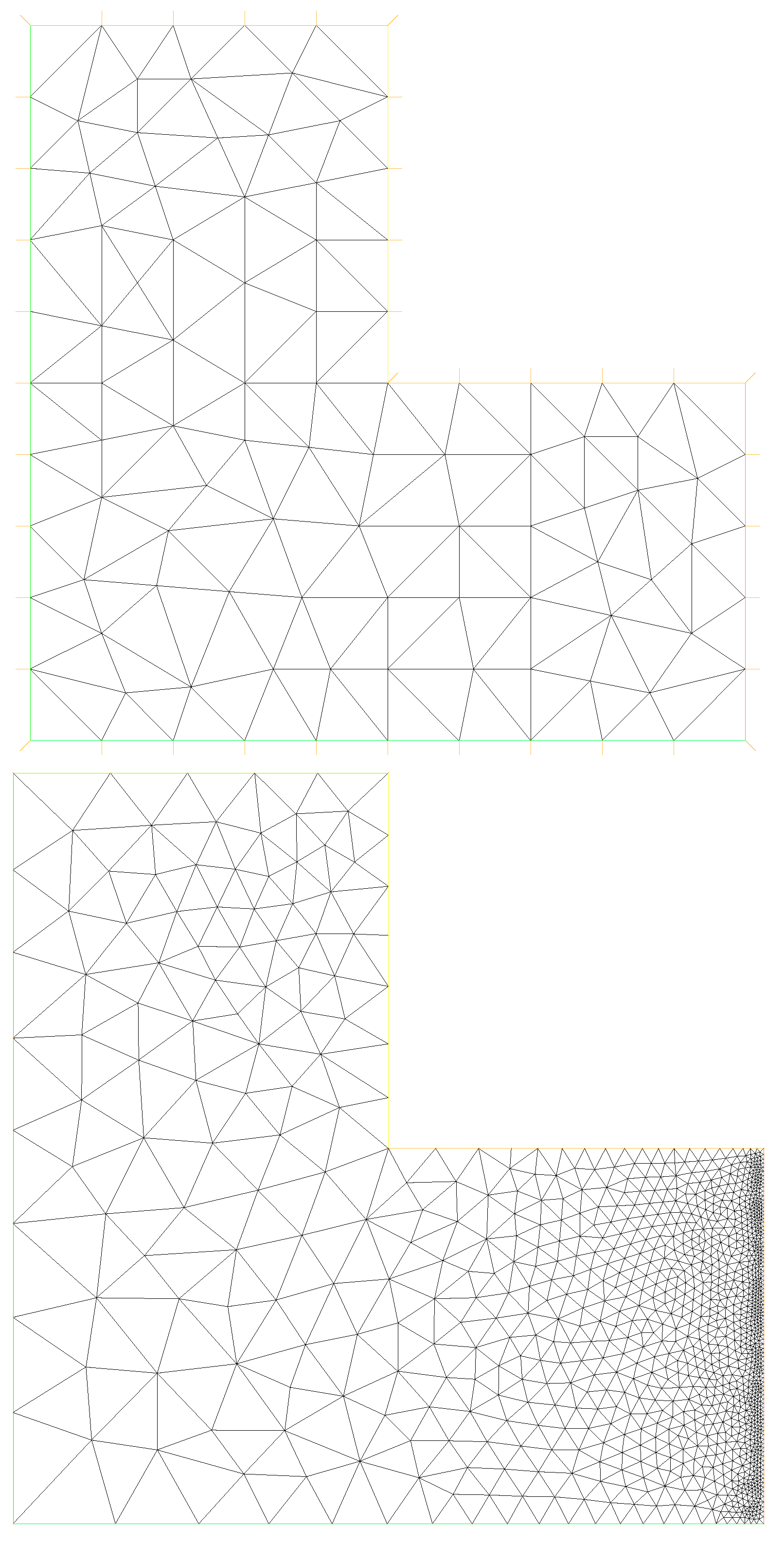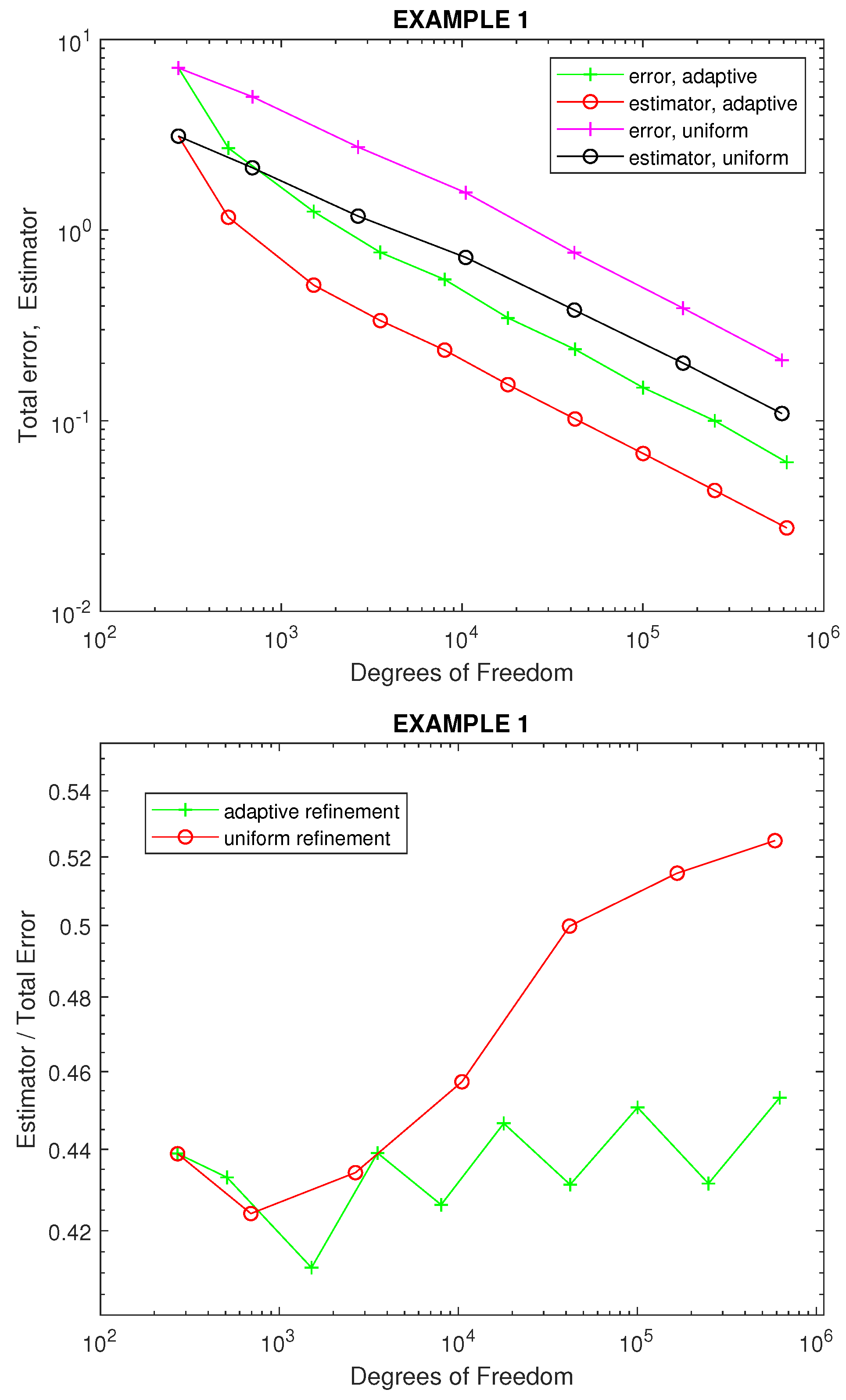On the Adaptive Numerical Solution to the Darcy–Forchheimer Model †
Abstract
:1. Introduction
2. Discrete Problem
3. Novel Error Estimator and Adaptive Algorithm
4. Numerical Experiment
5. Discussion
Funding
Institutional Review Board Statement
Informed Consent Statement
Conflicts of Interest
References
- Girault, V.; Wheeler, M.F. Numerical Discretization of a Darcy-Forchheimer Model. Numer. Math. 2008, 110, 161–198. [Google Scholar] [CrossRef]
- Salas, J.J.; López, H.; Molina, B. An analysis of a mixed finite element method for a Darcy-Forchheimer model. Math. Comput. Model. 2013, 57, 2325–2338. [Google Scholar] [CrossRef]
- Borouchaki, H.; Hecht, F.; Frey, P. Mesh gradation control. Int. J. Numer. Meth. Eng. 1998, 43, 1143–1165. [Google Scholar] [CrossRef]
- Hetch, F. FreeFEM Documentation, Release 4.6. 2020. Available online: https://doc.freefem.org/pdf/FreeFEM-documentation.pdf (accessed on 13 October 2021).



Publisher’s Note: MDPI stays neutral with regard to jurisdictional claims in published maps and institutional affiliations. |
© 2021 by the authors. Licensee MDPI, Basel, Switzerland. This article is an open access article distributed under the terms and conditions of the Creative Commons Attribution (CC BY) license (https://creativecommons.org/licenses/by/4.0/).
Share and Cite
González, M.; Varela, H. On the Adaptive Numerical Solution to the Darcy–Forchheimer Model. Eng. Proc. 2021, 7, 36. https://doi.org/10.3390/engproc2021007036
González M, Varela H. On the Adaptive Numerical Solution to the Darcy–Forchheimer Model. Engineering Proceedings. 2021; 7(1):36. https://doi.org/10.3390/engproc2021007036
Chicago/Turabian StyleGonzález, María, and Hiram Varela. 2021. "On the Adaptive Numerical Solution to the Darcy–Forchheimer Model" Engineering Proceedings 7, no. 1: 36. https://doi.org/10.3390/engproc2021007036
APA StyleGonzález, M., & Varela, H. (2021). On the Adaptive Numerical Solution to the Darcy–Forchheimer Model. Engineering Proceedings, 7(1), 36. https://doi.org/10.3390/engproc2021007036





